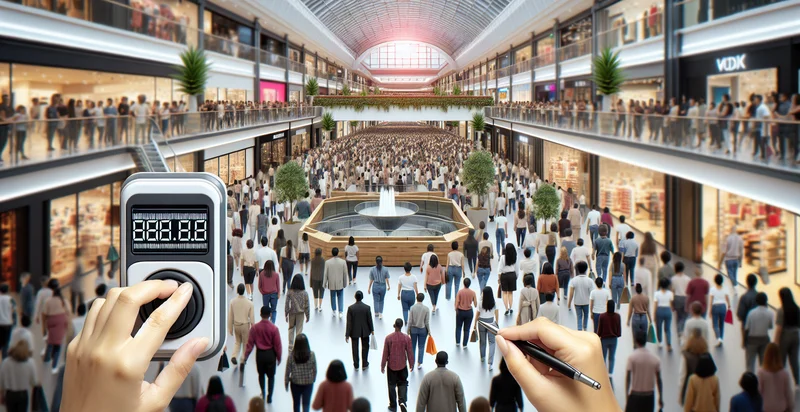Identify mall visitors count
using AI
Below is a free classifier to identify mall visitors count. Just upload your image, and our AI will predict the number of visitors in different sections of the mall. - in just seconds.

Contact us for API access
Or, use Nyckel to build highly-accurate custom classifiers in just minutes. No PhD required.
Get started
import nyckel
credentials = nyckel.Credentials("YOUR_CLIENT_ID", "YOUR_CLIENT_SECRET")
nyckel.invoke("mall-visitors-count", "your_image_url", credentials)
fetch('https://www.nyckel.com/v1/functions/mall-visitors-count/invoke', {
method: 'POST',
headers: {
'Authorization': 'Bearer ' + 'YOUR_BEARER_TOKEN',
'Content-Type': 'application/json',
},
body: JSON.stringify(
{"data": "your_image_url"}
)
})
.then(response => response.json())
.then(data => console.log(data));
curl -X POST \
-H "Content-Type: application/json" \
-H "Authorization: Bearer YOUR_BEARER_TOKEN" \
-d '{"data": "your_image_url"}' \
https://www.nyckel.com/v1/functions/mall-visitors-count/invoke
How this classifier works
To start, upload your image. Our AI tool will then predict the number of visitors in different sections of the mall..
This pretrained image model uses a Nyckel-created dataset and has 14 labels, including 1-5, 1001-2000, 101-200, 11-20, 2001-5000, 201-300, 21-30, 301-400, 31-50 and 401-500.
We'll also show a confidence score (the higher the number, the more confident the AI model is around the number of visitors in different sections of the mall.).
Whether you're just curious or building mall visitors count detection into your application, we hope our classifier proves helpful.
Related Classifiers
Need to identify mall visitors count at scale?
Get API or Zapier access to this classifier for free. It's perfect for:
- Foot Traffic Analysis: This use case leverages the false image classification function to accurately identify the number of visitors entering a mall at different times of the day. By analyzing peak hours, mall management can optimize staffing, security, and cleaning schedules to enhance the customer experience.
- Marketing Campaign Effectiveness: By correlating visitor counts with marketing campaigns, malls can assess the impact of promotional activities. Understanding attendance spikes in relation to specific campaigns enables better allocation of marketing resources for future initiatives.
- Event Planning Optimization: Malls can use visitor count data to evaluate the success of past events, helping them to determine the best type of events to host in the future. Accurate visitor counts from previous events give insights into themes, times, and locations that attract the most visitors.
- Retail Space Leasing Strategy: Real-time visitor count data allows mall managers to identify foot traffic trends in different areas. This information can inform retail leasing decisions, helping to attract businesses that will benefit from high customer volume.
- Safety and Security Monitoring: The false image classification function can help security teams monitor crowd sizes during peak hours. By understanding where large gatherings occur, security measures can be proactively adjusted to maintain a safe environment for visitors.
- Customer Behavior Insights: By integrating visitor counts with sales data, malls can uncover patterns relating customer foot traffic to shopping behavior. These insights can inform store layout, inventory decisions, and promotional placements to maximize sales.
- Dynamic Pricing for Parking: Visitor count data can inform dynamic pricing models for parking facilities in the mall. By adjusting parking rates based on expected visitor volumes, malls can better manage congestion, enhance the visitor experience, and maximize revenue from parking services.


